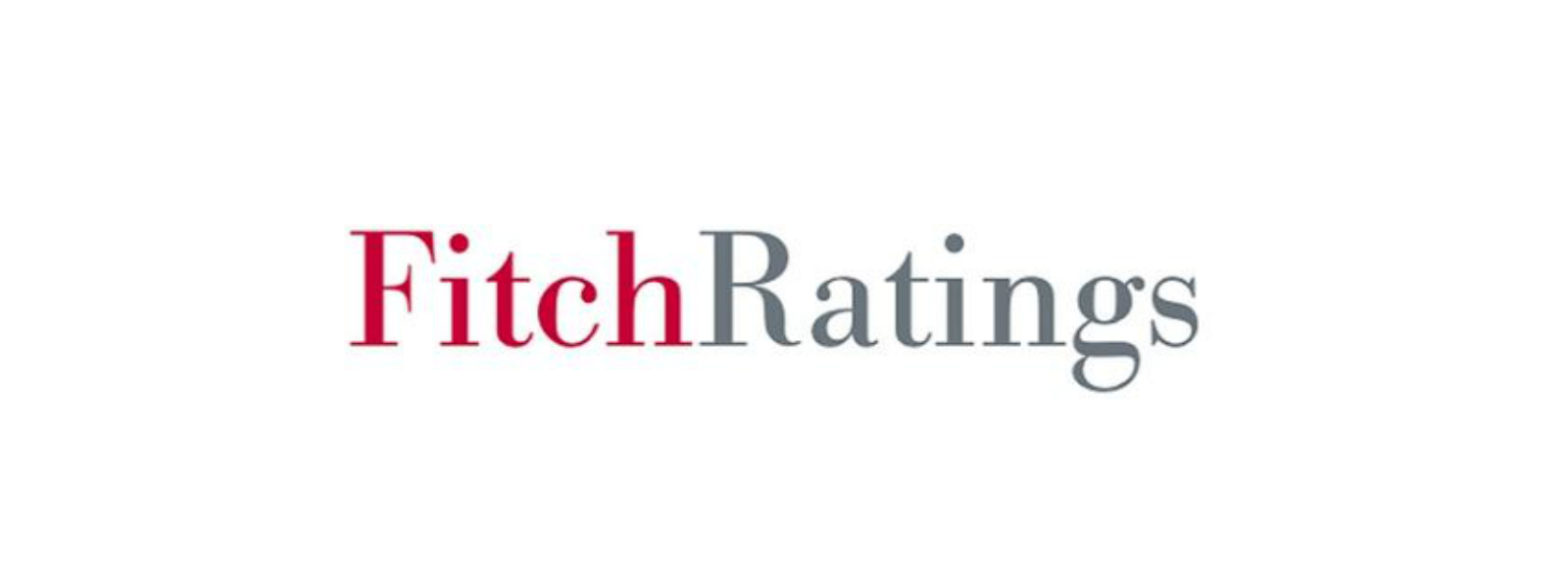.webp)

Fitch Downgrades Sri Lanka to 'CCC'
Colombo (News 1st); Fitch Ratings has downgraded Sri Lanka's Long-Term Foreign-Currency Issuer Default Rating (IDR) to 'CCC'.
Fitch typically does not assign Outlooks or apply modifiers to sovereigns with a rating of 'CCC' or below.
KEY RATING DRIVERS
The downgrade reflects Sri Lanka's increasingly challenging external-debt repayment position over the medium term. In particular, a sharp rise in the sovereign debt to GDP ratio associated with the coronavirus shock and narrowing financing options have heightened debt sustainability risks. Sri Lanka's external funding needs are substantial over the medium term, and in our view, risks to the sovereign's ability to meet its external-debt service obligations have increased. The government's external-debt obligations amount to USD23.2 billion between 2021 and 2025 or about USD4 billion annually, against FX reserves at end-October of just USD5.9 billion. The sovereign's financing and debt service challenges are exacerbated by its existing financing model, which has resulted in very high general government interest to revenues ratios. The average interest to revenue ratio from 2016 to 2020 is about 50%, substantially above the 'CCC' peer median of about 11%. The authorities plan to meet their external-debt obligations in 2021-2025 through a combination of sources, including bilateral, multilateral and commercial financing, but in Fitch's view, access to such external financing options will become more challenging against the backdrop of already high debt levels and an expected further weakening of government debt dynamics. Meanwhile, Fitch believes that financing conditions for potential market issuance have tightened materially, notwithstanding the reduction in political and policy uncertainty following the completion of parliamentary elections in August 2020 and submission of the draft 2021 budget in November. We think there are now increasing risks to Sri Lanka's ability to meet its external-debt repayments as reflected in our forecast of a steady decline in FX reserves in 2021 and 2022. We expect Sri Lanka's external liquidity ratio, defined as liquid external assets/external liabilities, will remain low at about 63%, against a 'CCC' median of about 68% in 2021. In the 2021 budget, the authorities have planned external borrowings of project and programme loans mostly through bilateral and multilateral sources (about USD1.8 billion), as well as foreign commercial loans (about USD1.4 billion) for budget support. The authorities do not currently anticipate a financing arrangement with the IMF. Fitch estimates Sri Lanka's government debt to GDP ratio to increase to about 100% in 2020 from 86.8% in 2019, and to rise further under our baseline scenario to around 116% in 2024. This trajectory is in sharp contrast to the authorities' medium-term fiscal strategy, which envisages a reduction in the debt to GDP ratio to 75.5% in 2025 from their estimate of 95.1% in 2020. The authorities are forecasting a pick-up in revenues to 14.2% of GDP by 2025, from their estimate of 9.5% in 2020, with GDP growth picking up to 6% or higher over the medium term. They also project a primary surplus by 2025. Our baseline projections are based on more conservative, and we believe, realistic, assumptions for economic growth, revenue and interest payments. Sri Lanka lacks a track record of sustained primary surpluses, its revenue-to-GDP ratio has stayed low and GDP growth has been weak (growth averaged 3.7% in 2015-2019). Accordingly, our baseline assumptions for 2021-2024 incorporate average annual growth of about 4%, a primary deficit of about 2% of GDP, and revenue-to-GDP of about 11%. Sri Lanka's 2021 budget targets a widening deficit of 8.9% of GDP, from 7.9% of GDP for 2020. The budget contains numerous tax incentives for the agricultural sector, and policies to facilitate private investment. It also includes reforms to improve tax collection and administration, and the introduction of a special goods and services tax for alcohol, betting and gaming, telecommunication and vehicles. In our view, the official revenue projection of nominal revenue growth of about 28% in 2021 is highly ambitious given the lack of major revenue-raising measures and the numerous tax incentives, coupled with the tax cuts announced towards end-2019. The budget also targets a large increase in spending, particularly public investment, raising it from an estimated 2.6% of GDP in 2020 to 6.1% of GDP in 2021. In our view, the budget lacks a credible fiscal consolidation strategy and provides only limited details on the potential revenue impact of some of the measures announced, raising uncertainty about the government's planned reduction in government debt and budget deficit. As such, we project the budget deficit to widen to about 11.5% of GDP in 2021 and 2022. This forecast is based on our GDP growth assumption of 4.9% in 2021 compared to the authorities' 5.5%. Sri Lanka's low revenue-to-GDP ratio has remained a key weakness in the fiscal profile and we expect it to remain below the 'CCC' median of 23% in 2021. Sri Lanka's economic performance has been affected by the COVID-19 pandemic through multiple channels, even though the virus has been relatively well contained domestically. Travel and tourism, which is an important driver of the economy has been hard hit and the outlook for its recovery remains uncertain and dependent on the evolution of the pandemic. The direct contribution of tourism to GDP is about 4%, but the indirect spill-over effect is much higher. Private consumption, which accounts for about 70% of GDP, was weakened by the domestic lockdown in place between March and May2020. GDP contracted by 1.6% in 1Q20, and we expect an even sharper contraction in 2Q (publication of the 2Q GDP data has been delayed). Overall, we expect GDP to contract by 6.7% in 2020 and to begin recovering in 2021 by 4.9%, partly driven by the low-base effect. Our forecasts are subject to a high degree of uncertainty related to the path of the pandemic globally and in Sri Lanka. However, recent positive news on vaccine development initiatives has highlighted the potential for the gradual roll-out of a medical solution to the pandemic from early 2021, which could facilitate a return to economic normalisation and mitigate the downside risks to macro forecasts. Remittances have performed unexpectedly well during the pandemic, growing by about 2.7% yoy between January-October, and have helped support the external position. However, we view this increase as temporary, due to factors such as workers repatriating their savings before returning home, and a shift towards more formal remittance channels. The stronger remittance inflows alongside a decline in imports due to various import controls, has kept Sri Lanka's current account from deteriorating significantly in 2020. We expect the current account deficit to remain manageable at 2% -3% of GDP in 2021 and 2022 as some of those import controls are likely to remain in place. Sri Lanka's basic human development indicators, including education standards, are high compared with the 'CCC' median, based on the UN Human Development Index Score, which positions Sri Lanka in the 63rd percentile, well above the 27th percentile for the 'CCC' median. The country's per capita income of USD3,775 estimated by Fitch at end-2020 is above the 'CCC' median of USD2,661. The operating environment for banks in Sri Lanka remains challenging and we expect banks' financial profiles to come under stress. The sector regulatory non-performing loan (NPL) ratio rose to 4.7% by end-2019, prior to the economic disruptions from the pandemic, and reached 5.4% by end-1H20. Underlying asset-quality stress could continue to build, despite the regulatory relief in the form of a moratorium for affected customers that has to a large extent halted the recognition of credit impairment. Sri Lankan banks could also face increased challenges in the access to - and pricing of - foreign-currency funding stemming from the deteriorating sovereign credit profile. ESG - Governance: Sri Lanka has an ESG Relevance Score of '5' for Political Stability and Rights as well as for the Rule of Law, Institutional and Regulatory Quality and Control of Corruption, as is the case for all sovereigns. These scores reflect the high weight that the World Bank Governance Indicators have in our proprietary Sovereign Rating Model. Sri Lanka has a medium World Bank Governance Indicator ranking in the 46th percentile, reflecting a recent record of peaceful political transitions, a moderate level of rights for participation in the political process, moderate institutional capacity, established rule of law and a moderate level of corruption.RATING SENSITIVITIES
The main factors that could, individually or collectively, lead to positive rating action/upgrade are: -External Finances: Improvement in external finances, supported by higher non-debt inflows or a reduction in external sovereign refinancing risks from an improved liability profile. - Public Finances: Stronger public finances, accompanied by a sustained decline in the general government debt to GDP ratio, closer to the 'B' median, underpinned by a credible medium-term fiscal consolidation strategy - Structural: Improved policy coherence and credibility, leading to more sustainable public and external finances and a reduction in the risk of debt distress The main factors that could, individually or collectively, lead to negative rating action/downgrade: - Increased signs of a probable default event, for instance from severe external liquidity stress, potentially reflected in an ongoing erosion of foreign exchange reserves and reduced capacity of the government to access external financing.SOVEREIGN RATING MODEL (SRM) AND QUALITATIVE OVERLAY (QO)
In accordance with the rating criteria for ratings in the 'CCC' range and below, Fitch's sovereign rating committee has not used the SRM and QO to explain the ratings, which are instead guided by the rating definitions. Fitch's SRM is the agency's proprietary multiple regression rating model that employs 18 variables based on three-year centred averages, including one year of forecasts, to produce a score equivalent to a Long-Term Foreign-Currency Issuer Default Rating. Fitch's QO is a forward-looking qualitative framework designed to allow for adjustment to the SRM output to assign the final rating, reflecting factors within our criteria that are not fully quantifiable and/or not fully reflected in the SRM.BEST/WORST CASE RATING SCENARIO
International scale credit ratings of Sovereigns, Public Finance and Infrastructure issuers have a best-case rating upgrade scenario (defined as the 99th percentile of rating transitions, measured in a positive direction) of three notches over a three-year rating horizon; and a worst-case rating downgrade scenario (defined as the 99th percentile of rating transitions, measured in a negative direction) of three notches over three years. The complete span of best- and worst-case scenario credit ratings for all rating categories ranges from 'AAA' to 'D'. Best- and worst-case scenario credit ratings are based on historical performance. For more information about the methodology used to determine sector-specific best- and worst-case scenario credit ratings, visit [https://www.fitchratings.com/site/re/10111579].KEY ASSUMPTIONS
The global economy performs in line with Fitch's global GDP forecasts published in November 2020 at https://www.fitchratings.com/site/re/10142389.REFERENCES FOR SUBSTANTIALLY MATERIAL SOURCE CITED AS KEY DRIVER OF RATING
The principal sources of information used in the analysis are described in the Applicable Criteria.ESG CONSIDERATIONS
Sri Lanka has an ESG Relevance Score of 5 for Political Stability and Rights as World Bank Governance Indicators have the highest weight in Fitch's SRM and are highly relevant to the rating and a key rating driver with a high weight. Sri Lanka has an ESG Relevance Score of 5 for Rule of Law, Institutional & Regulatory Quality and Control of Corruption as World Bank Governance Indicators have the highest weight in Fitch's SRM and are therefore highly relevant to the rating and are a key rating driver with a high weight. Sri Lanka has an ESG Relevance Score of 4 for Human Rights and Political Freedoms, as strong social stability and voice and accountability are reflected in the World Bank Governance Indicators that have the highest weight in the SRM. They are relevant to the rating and a rating driver. Sri Lanka has an ESG Relevance Score of 4 for Creditor Rights, as willingness to service and repay debt is relevant to the rating and is a rating driver for Sri Lanka, as for all sovereigns. Except for the matters discussed above, the highest level of ESG credit relevance, if present, is a score of 3. This means ESG issues are credit-neutral or have only a minimal credit impact on the entity, either due to their nature or to the way in which they are being managed by the entity. For more information on Fitch's ESG Relevance Scores, visit www.fitchratings.com/esgOther Articles
Featured News





.png )


-772676_550x300.jpg)

-772647_550x300.jpg)
-772640_550x300.jpg)




-771573_550x300.jpg)
















.gif)